What would happen if the face value of a coin was worth less than the metal in the coin itself? Over the history of our country, this has happened several times: first with silver in dimes, quarters and half dollars, and later with copper pennies, in the 1970s and early 1980s. Each time, the Treasury was forced to change the metal make-up of coins making way for some cool science for kids you can do at home with spare change and common household ingredients.
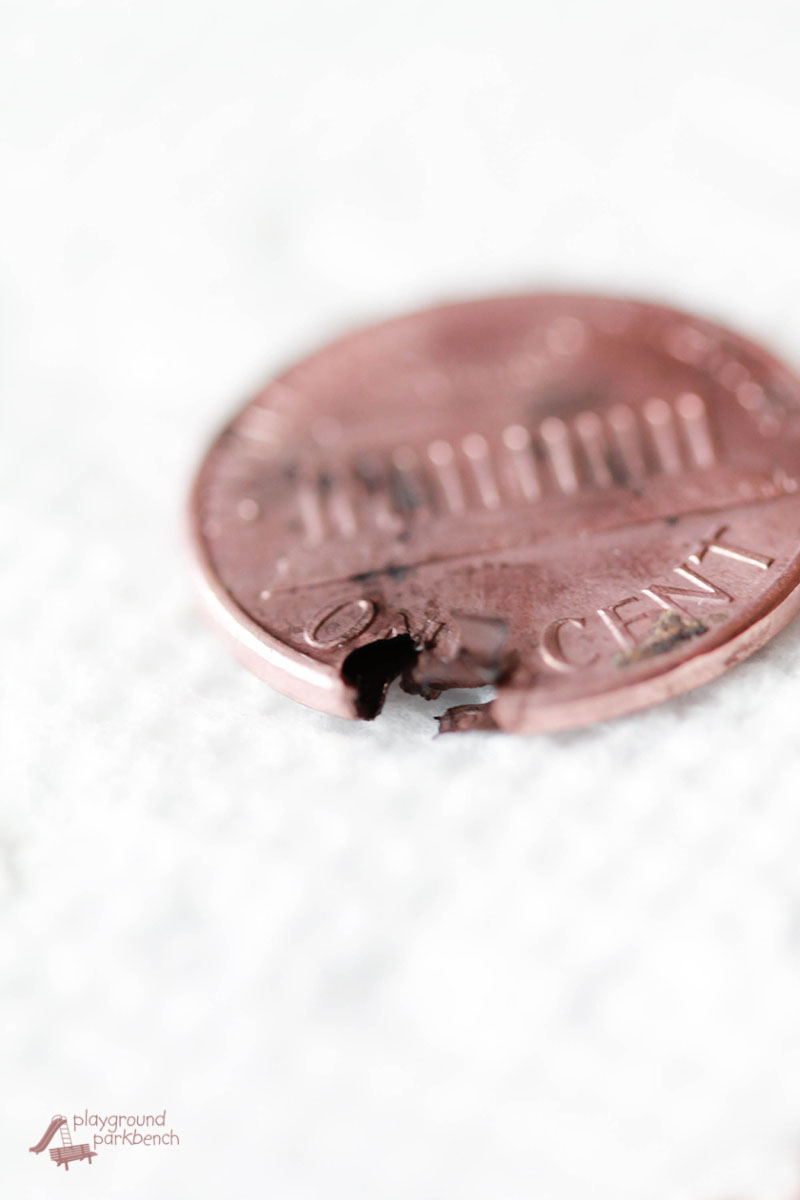
Cool Science for Kids with Pennies
There are only a handful of academic moments that stand out from my childhood that I remember as though they happened yesterday. One of them was this science experiment we did in my sophomore chemistry class with 1982 pennies and hydrochloric acid.
Even I am not crazy enough to use that with preschoolers… but guess what? It even works with regular, everyday lemon juice. But before we get to the cool science for kids at home, let’s have a little history and metal markets lesson.
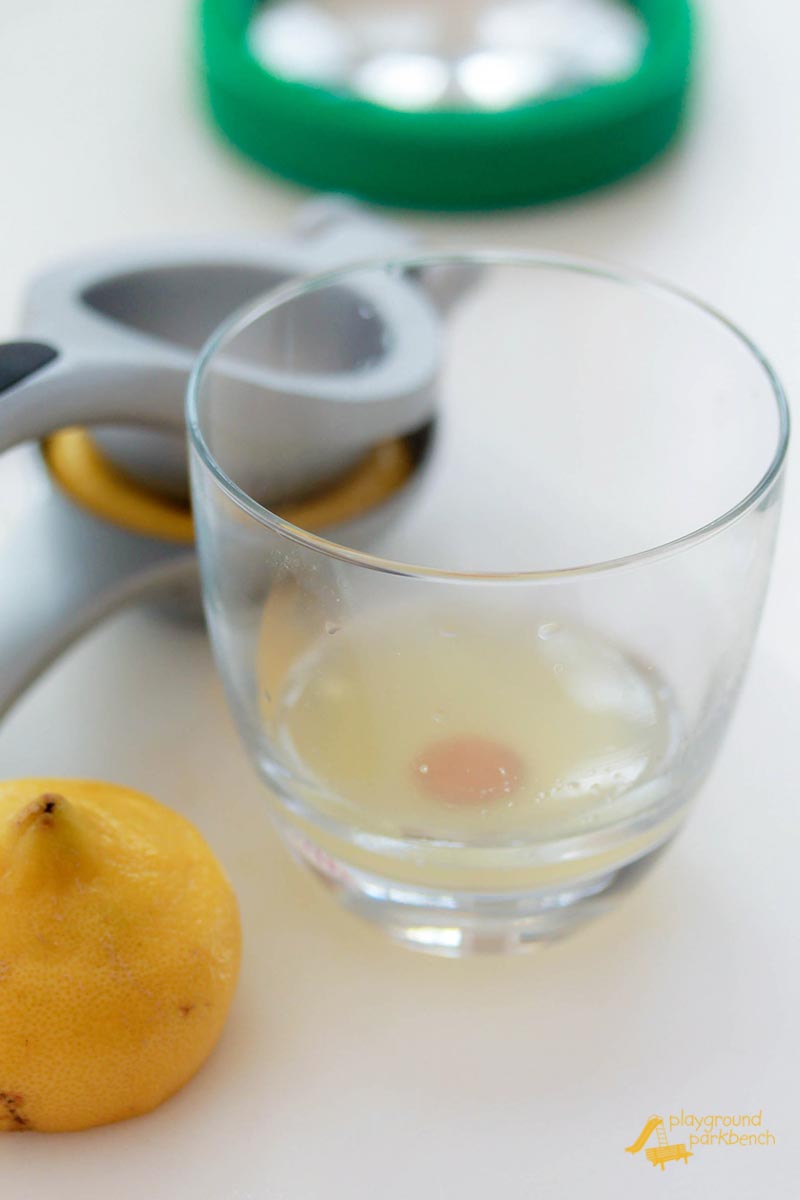
The Value of a Penny
How much is a penny worth? One cent… right? But before 1982, pennies were made of brass, a metal composed of 95% copper and 5% zinc, weighing in at just over 3 grams. In the late 1970s, worldwide inflation caused the price of all commodities, from oil to metals, to spike, making the value of the metal in a penny worth more than its one cent face value.
People started hoarding pennies or melting them down for their metal value instead of using them as money, resulting in coin and money shortages. This had previously happened with silver dimes, quarters and half dollars in the 1960s. The Treasury, after a few trials and errors, changed the metal make-up of a penny. Today’s pennies are now made with a 99% zinc core, plated in pure copper.
Want to test some pennies to expose what they are made of???

Exposing the Insides of a Penny
Now for the cool science for kids… you only need a few very basic supplies for this simple science experiment.
Supplies
2 pennies – one from 1981 or earlier, one from after 1982
Lemon
Lemon juicer
2 glasses
Needle-nose pliers
Safety goggles (recommended)
First, have an adult take the needle-nose pliers and pinch a small notch in the edge of each penny. Then, place each penny in the bottom of a glass.
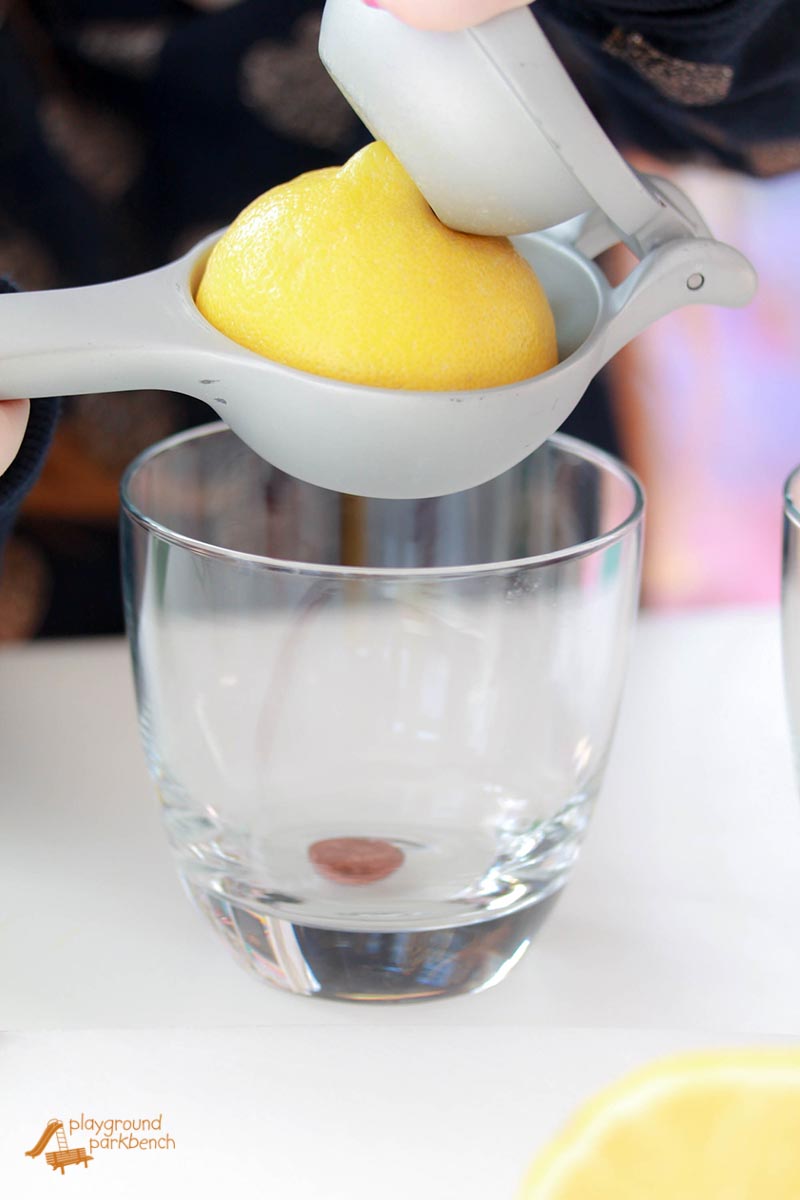
Again, ask a grown up to cut the lemon in half. Then squeeze the juice from one half of the lemon into each glass. Be sure to wear safety goggles when you juice the lemons as the juice can burn your eyes.

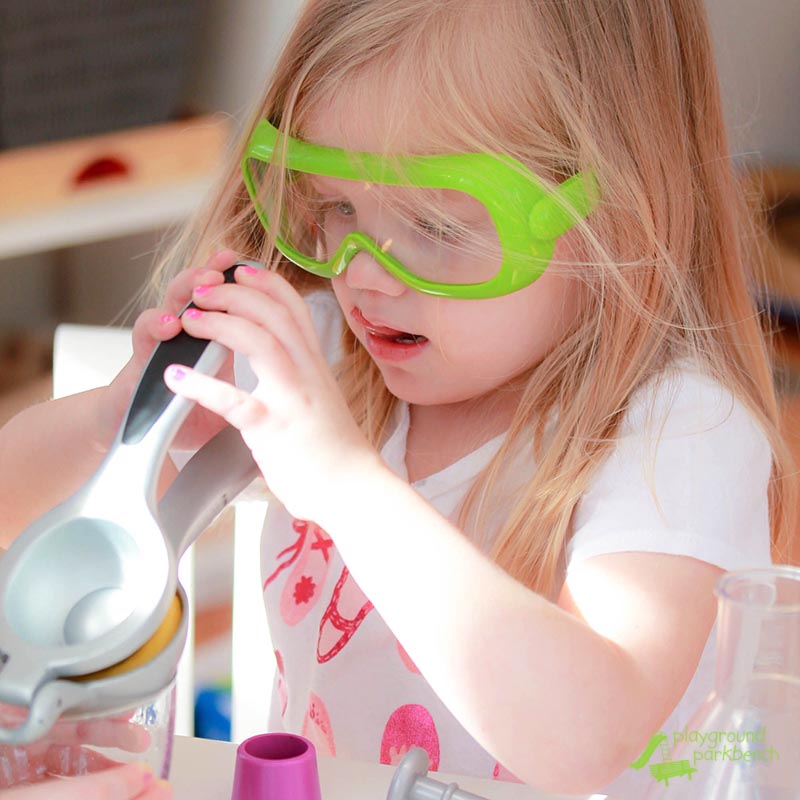
What now? Wait and watch.
What Cool Science is happening?
Little to nothing will happen to the pre-1982 penny. It is solid copper and while any oxidation on the exterior may react with the citric acid in the lemon juice, leaving your old penny bright and shiny, it will remain whole.

The post-1982 penny will begin to bubble – a sign of a chemical reaction. There are actually two reactions happening. The citric acid, made up of carbon, hydrogen and oxygen, will cause the zinc core to oxidize – you may see small, solid black particles floating in your lemon juice, zinc oxide. This process releases hydrogen from the acid, forming the bubbles you see collecting on the surface of the lemon juice.
Hydrochloric acid is much stronger than citric acid and can hollow out the zinc core of a penny, leaving only the thin, copper shell over 24-48 hours. Citric acid will do the same thing, but is a much slower process. We left ours to sit for several days, and it hollowed about 1/4 of the zinc core. But my preschool scientists were still duly impressed!
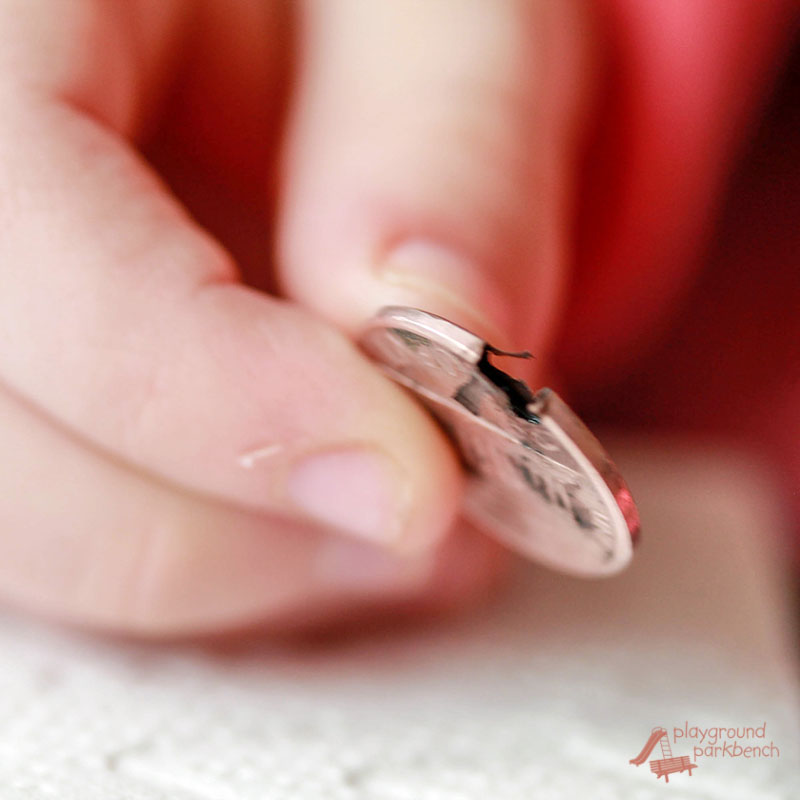
Rinse your pennies and let your scientists carefully observe them. Be careful, as the copper shell can be sharp.
You can also test pennies from 1982. The Treasury was finalizing the precise formation of pennies that year, and different mints began making the zinc core pennies at different points during the year – so some 1982 pennies were still solid brass, while some have zinc cores.
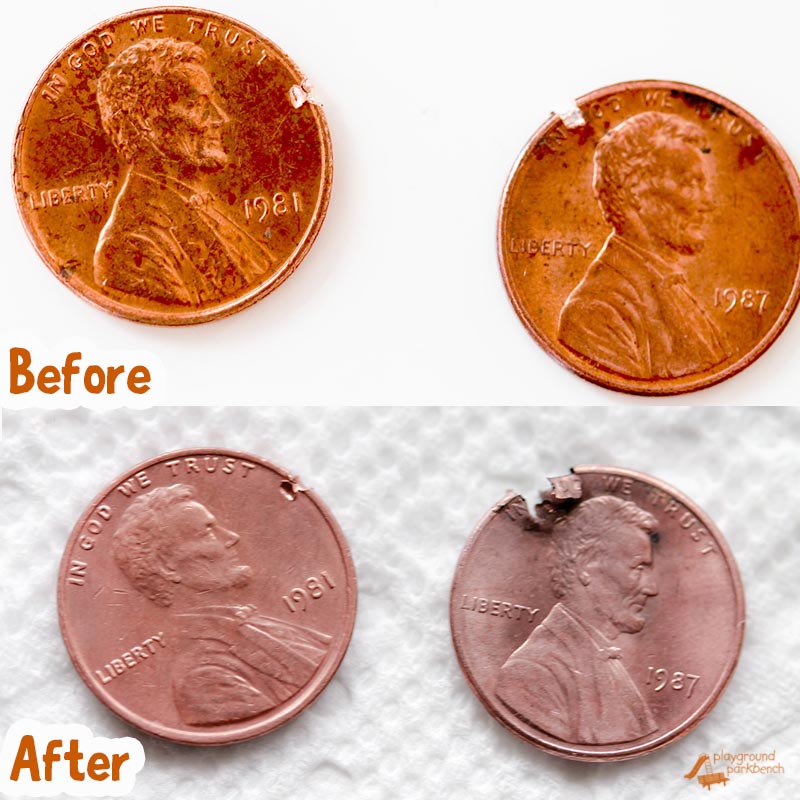
Want to try some more preschool STEM activities with coins? Test their fine motor skills with Drops on a Coin, or try some more quick STEM activities featuring coins and chemical reactions by Cleaning Coins. These are great activities to coincide with a no-cost school fundraiser, Coin Wars!
You can find all of these on our STEM for Kids – Science and Preschool boards on Pinterest!


8 comments
[…] as a result, changes were made in what U.S. money is made of! Learn more about the history in this blog post, and then do the included experiment to see what your money is made […]
[…] Pennies are made from copper. Learn more about them with this science experiment. […]
Does a lime work???
I would think so – it’s still citric acid, I believe…
[…] Exposing the Value of Money with Cool Science from Playground Park Bench […]
[…] Exposing the Insides of a Penny […]
[…] 12. What’s inside a penny? […]
[…] For Kids […]